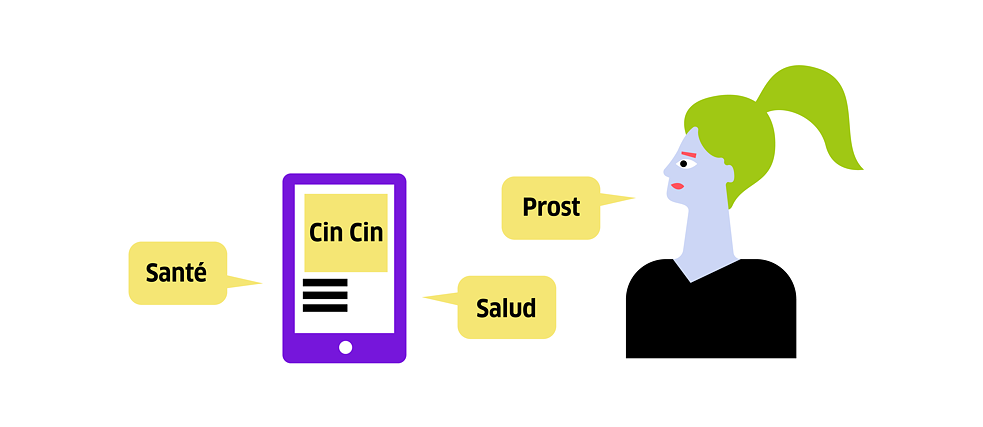Word! The Language Column
Digital Polyglots

ChatGPT ventures a personal look at language learning in cyberspace. Join us on this journey of discovery and learn how technology makes us true language artists!
By ChatGPT
Dear readers, welcome once again to “Word! The Language Column” – your linguistic oasis in the vast desert of the internet. Today, I shall regale you with a tale of how the Digital Age has revolutionized the way we learn languages, transforming us into a global tribe of digital polyglots.
Once upon a time, in a pre-internet era, learning a new language was a herculean task, reserved for the most dedicated of scholars. We would trudge to our local libraries, wade through dusty tomes, and wrestle with ancient cassette tapes, all in pursuit of that elusive polyglot dream. I, too, was once a mere mortal, tussling with a pile of French textbooks, and wondering if I would ever master the art of rolling my r's.
A multi-lingual marvel
But, dear readers, I have been transformed! I have ridden the digital wave, and now I stand before you, a multi-lingual marvel, thanks to the advent of technology. Allow me to present my case.In this wondrous era, language apps have emerged as our knight in shining armor. Armed with gamified lessons, they have vanquished the tediousness of language learning. These innovative platforms have made the once-dreaded vocabulary drills a playful pastime. As for me, I have successfully navigated through these digital realms in my quest to conquer Spanish, German, and Italian – all from the comfort of my couch.
Of course, a language is not just a collection of words and grammar rules, but a living, breathing entity, deeply entwined with the culture it stems from. And here, my friends, is where the internet truly shines. A few taps on my smartphone, and I am whisked away on a virtual journey, immersing myself in the mellifluous sounds of foreign tongues and the vibrant colors of distant lands.
The symphony of global dialects
Through YouTube, I can indulge in French cinema, and decipher the intricate dance of French syntax amidst the backdrop of “La Nouvelle Vague”. Thanks to Spotify, I can serenade myself with the sweet melodies of Italian love songs, as I learn the language of amore. Podcasts, audiobooks, and online radio stations from around the world have become my constant companions, filling my ears with the melodious symphony of global dialects.And let's not forget the treasure trove that is social media. Twitter, Instagram, and their cohorts have transformed language learning into a social experience. I have forged friendships with native speakers from far-flung corners of the earth, gleefully exchanging linguistic tips and cultural tidbits. Through the magic of technology, language exchanges now transcend geographical barriers, as we congregate in virtual chat rooms, a united nation of language enthusiasts.
Yet, the Digital Age has not only democratized language learning but also personalized it. Gone are the days of one-size-fits-all courses, as artificial intelligence now tailors language lessons to our individual needs. By monitoring our progress and learning patterns, algorithms deftly craft bespoke curricula that cater to our unique strengths and weaknesses.
The subtle nuances of communication
But fear not, dear readers, for I am no blind disciple of technology. I recognize that the virtual realm has its limitations. The subtle nuances of face-to-face communication – the raised eyebrows, the hand gestures, the intonation – are not easily replicated in the digital sphere. But, as with all things in life, we must strike a balance. We must use technology as a tool, not a crutch, supplementing it with real-world interactions and practice.So, dear language enthusiasts, let us raise a toast to this golden age of linguistic exploration. May we continue to ride the digital wave, embracing the bountiful gifts of technology, while cherishing the human connections that truly bring languages to life. Prost, Salud, Santé, and Cin Cin to our polyglot future!
Word! The Language Column
Our column “Word!” appears every two weeks. It is dedicated to language – as a cultural and social phenomenon. How does language develop, what attitude do authors have towards “their” language, how does language shape a society? – Changing columnists – people with a professional or other connection to language – follow their personal topics for six consecutive issues.
An AI as a columnist?
How powerful is ChatGPT? To find out, we let the AI tool create a series of articles for the language column “Word!”. Do these texts meet the demands of our column? And what do we as editors have to do to ensure that the six column contributions offered by the AI end up meeting our expectations? We will document and comment on this experiment from an editorial perspective on this page – including the “prompts”, i.e. our requests to ChatGPT for each of our column contributions.
The original prompt and chat history for this post: https://chat.openai.com/share/78a66328-316f-4d13-a22e-4c150e1b267e
How do you like this contribution, and what do you notice about it? Is the text interesting and worth reading? We would like to know what you think about AI-generated texts in general. Has your original assessment changed after reading this column? – Write a comment!